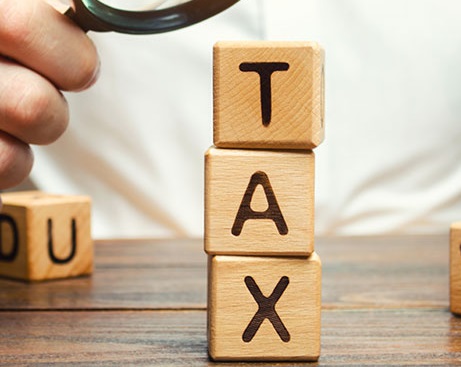This implies gross tax revenue growth so far is merely 3 per cent vs. 10 per cent BE – raising the asking growth rate for the remaining year to 38 per cent.
The deep contraction in corporate taxes, even with healthy corporate profits, needs further investigation, the report said.
However, given the non-linear relationship between economic activity and taxes, tax growth undershoot vs. nominal growth is not too surprising in the late cycle.
The incipient signs of fiscal stress in 4MFY24 are largely emanating from (1) deep contraction in corporate tax (CT) growth despite healthy corporate profits and (2) higher-than-usual capex spend in early months.
However, we argue given the non-linear relationship between economic activity and taxes, the tax growth undershoot vs. nominal growth is not too surprising in the late cycle.
Separately, our study of listed companies hints at a behavioral change in corporate tax payments post-Covid, where front-loading/smoothening of advance corporate tax payments has been led by unlisted/SMIDs. However, we are seeing signs of reversal to pre-Covid behavior in 1QFY24. We expect CT collections to pick up pace in 2H, albeit growing 7 per cent, the report said.
The 10 per cent contraction in CT growth in 4MFYTD24 stands in contrast with the reported ~36 per cent profit growth in our sample of listed companies in 1QFY24, the report said.
Data discrepancies between CBDT and CGA raise further eyebrows. We argue that CT contraction is more of a technical/seasonal adjustment by corporates and should normalize/smoothen over the year. Our study of listed companies hints at a behavioral change seen in CT payment post-Covid, where front-loading/smoothening of advance CT payments has been led by unlisted/SMIDs, the report said.
This possibly explains the sharp increase in the share of CT collections in 1Q for GoI (20 per cent in FY23 vs. <12% in FY19) and (ii) the share of listed corporates’ tax payments in the government’s 1Q CT collections falling to 50 per cent by FY23 vs. 70-90 per cent earlier. All of this possibly explains formalisation and better tax compliance amid GST-led enhanced tax scrutiny/better estimation of advance tax liabilities for SMIDs, apart from factors like better economic outcomes in the early growth cycle, the report said.
Startlingly, we are seeing signs of a reversal to pre-Covid behavior in Q1FY24. While we estimate CT growth at 7 per cent in FY24E vs. 12 per cent in BE, we reckon the current -10 per cent growth is an anomaly, and depending on how refunds and SMIDs/unlisted companies’ tax payments pan out, and as pre-Covid seasonal trends partly make a comeback, CT collections may pick up pace in 2HFY24, the report said.
(Sanjeev Sharma can be reached atSanjeev.s@ians.in)
–IANS
san/ksk





























